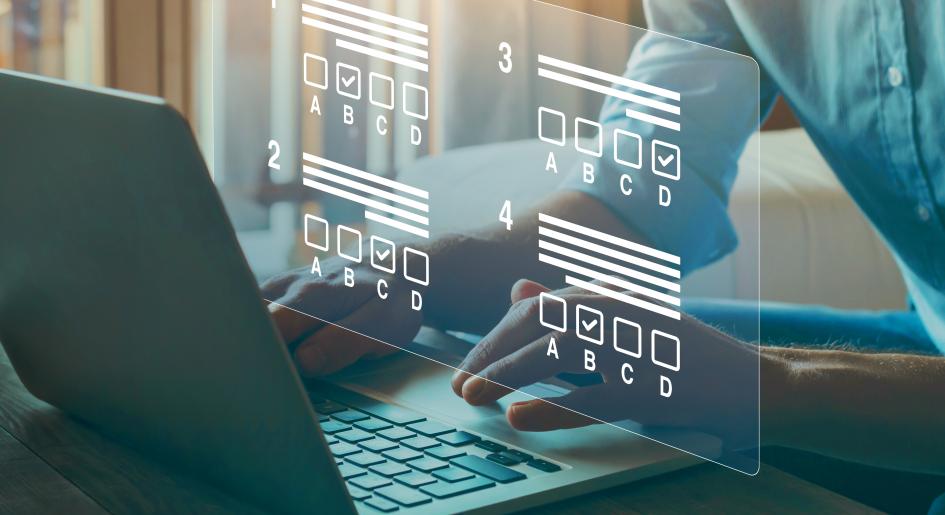
Preparing for the NextGen Bar Exam: What Your Law School Needs to Know
Beginning in July 2026, the National Conference of Bar Examiners (NCBE) will offer the NextGen Bar Exam, a new iteration of the licensing test that is being developed based on extensive study of the knowledge and skills junior attorneys need to succeed in practice. The current Uniform Bar Exam will continue to be offered for two years and then will be completely sunset as of July 2028.
LSAC’s Legal Education Consulting Group recently hosted a well-received webinar, “Preparing for NextGen: A Primer for Associate Deans.” The webinar focused on the three different types of questions on the NextGen Bar Exam and examined the issue of whether NextGen is all that different from the current Uniform Bar Exam (UBE). As part of the discussion, we examined a three-step action plan schools can adopt for NextGen readiness: (1) assess; (2) discuss; (3) prepare.
Question Types
The current UBE consists of three types of questions: the Multistate Bar Exam (MBE) (traditional multiple-choice); Multistate Essay Exam (MEE) (traditional issue-spotter essays); and the Multistate Performance Test (MPT) (a performance task based on a law library and fact file provided to examinees). NextGen will also have three types of questions that are, to various degrees, similar to or departures from the UBE: multiple-choice questions (both traditional and nontraditional); Integrated Question Sets (multiple-choice and short answer questions largely based on factual and legal material provided to examinees); and performance tasks (very similar to the MPT). There is much more to discuss regarding the question types than can be covered in this blog, but this is the basic structure.
Is NextGen Different?
There has been a lot of debate around whether NextGen is really all that different from the UBE. A number of academic support and bar passage faculty are disappointed in how many multiple-choice questions will still be on the exam because one of the explicit goals of NextGen was to move away from multiple-choice questions and the requirement that examinees memorize large amounts of black-letter law.
At the end of the day, as the breakdown below demonstrates, the UBE and NextGen are fundamentally different in that NextGen places much more weight on students’ ability to read, digest, and apply primary sources under time pressure (60% of the exam versus 20% of the exam).
| UBE | NextGen |
|---|---|
|
50% MBE |
40% multiple-choice questions (will “initially” resemble the MBE) |
|
30% MEE |
Approx. 25% Integrated Question Sets |
|
20% MPT |
Approx. 35% Performance Tasks |
|
80% of the exam requires memorization and traditional issue-spotting. 20% of the exam requires reading, digesting, and applying primary legal and factual sources under time pressure. |
Approx. 60% of the exam requires reading, digesting, and applying primary legal and factual sources under time pressure. Approx. 40% of the exam requires memorization and traditional issue-spotting. |
So, while there is still an ample amount of memorization required, NextGen is really putting practical skills to the test. And those skills are much broader than those tested on the UBE:
| Skills Tested on UBE | Skills Tested on NextGen |
|---|---|
|
|
What Can Schools Do to Promote NextGen Readiness?
ASSESS. The first step in NextGen readiness is to assess the current aptitude of your students for this type of exam. It’s fair to begin this process now, even though your current 3Ls won’t be taking NextGen, because the assessment will give you feedback on how well your existing curriculum is equipping students with the practical skills they need to succeed on the new exam. In addition, mapping your curriculum against NextGen subjects and skills provides another view into readiness.
DISCUSS. The second step — a faculty-wide discussion of NextGen and its implications — is a necessary prerequisite to any preparation plan. In short, to succeed on NextGen, students need to be repeatedly exposed to basic skills instruction throughout the three years of the curriculum. Employing the principle that “many hands make light work,” the more members of the faculty that are involved in this effort, the lesser the lift for any individual faculty member. A discussion of assessment outcomes can foster faculty buy-in.
PREPARE. The result of the discussion should be a plan for preparing students to succeed on NextGen. The nature and scope of this plan will depend on the results of your assessment, the capacity of existing academic support and bar passage programs, as well as your student profile and overall academic culture.
LSAC’s Legal Education Consulting team is available to unpack the details of NextGen for your law school faculty and to assist with all three steps outlined above, including developing assessment tools, curriculum mapping, facilitating faculty discussions, and strategizing innovations to programming and pedagogy. Contact me at spollvogt@LSAC.org for more information.
LSAC’s Legal Education Consulting group supports member law schools through various services, including enrollment modeling, digital marketing, strategic planning, department review, curriculum review, and staffing support.

